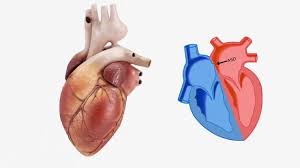
A heart hole, also known as a hole in the heart, refers to an abnormal opening between the heart’s chambers. This condition is typically congenital, meaning it is present at birth. There are two primary types of heart holes:
Atrial Septal Defect (ASD)
An Atrial Septal Defect is a hole in the wall (septum) that separates the two upper chambers (atria) of the heart: the left atrium and the right atrium. Blood flows through the hole from one atrium to the other, which can lead to an increased volume of blood flowing into the right side of the heart and lungs.
Symptoms of ASD:
- Many people with ASD may not experience symptoms, especially if the hole is small.
- If symptoms occur, they may include:
- Shortness of breath, especially during physical activity.
- Fatigue or feeling tired easily.
- Swelling in the legs or abdomen.
- Frequent respiratory infections.
- Heart palpitations or irregular heartbeats.
- Cyanosis (bluish tint to the skin or lips) in severe cases.
Causes of ASD:
- Congenital: ASDs are usually present at birth due to improper closure of the septum during fetal development. The exact cause is often unknown, but it can sometimes be related to genetic conditions, family history, or other factors during pregnancy (e.g., maternal infections or medications).
2. Ventricular Septal Defect (VSD)
A Ventricular Septal Defect is a hole in the wall (septum) between the two lower chambers (ventricles) of the heart: the left ventricle and the right ventricle. This condition causes blood to flow from the left ventricle (which is under higher pressure) to the right ventricle, potentially leading to increased pressure in the lungs and heart failure if left untreated.
Symptoms of VSD:
- Many people with a small VSD may not show symptoms.
- Larger holes or defects may cause:
- Shortness of breath.
- Fatigue, especially during exercise.
- Poor growth or failure to thrive in infants.
- Heart murmurs (an abnormal sound heard through a stethoscope).
- Frequent respiratory infections.
- Cyanosis in severe cases (indicating low oxygen levels in the blood).
Causes of VSD:
- Congenital: VSDs are typically present from birth and occur when the septum between the ventricles does not develop properly. The exact cause is usually unknown, though it may be linked to genetic conditions or maternal factors during pregnancy.
Diagnosis of Heart Holes
Heart holes are usually detected during a routine physical exam, especially if a heart murmur is heard. To confirm the diagnosis, the following tests may be used:
- Echocardiogram (Echo): An ultrasound of the heart, which provides images of the heart’s chambers and valves and shows the hole and any abnormal blood flow.
- Electrocardiogram (EKG): A test that records the electrical activity of the heart to check for abnormal rhythms or signs of strain caused by a heart hole.
- Chest X-ray: This can help detect an enlarged heart or signs of fluid in the lungs due to abnormal blood flow caused by the hole.
- Cardiac MRI or CT scan: These tests provide detailed images of the heart’s structure and can be used for more complex cases.
- Cardiac catheterization: In some cases, a catheter may be threaded through the blood vessels to the heart to measure pressures within the heart and confirm the size of the defect.
Treatment of Heart Holes
The treatment for a heart hole depends on the size and location of the hole, the symptoms, and whether there are any complications.
- Observation: Small heart holes that do not cause symptoms or complications may not require any immediate treatment and may be monitored over time. Some holes may close on their own during infancy or early childhood.
- Medications:
- Diuretics: To manage symptoms like swelling and fluid buildup.
- Blood pressure medications: To help control blood pressure and reduce strain on the heart.
- Surgical repair:
- Surgical closure: If the hole is large or causes significant symptoms, surgery may be needed. This involves closing the hole using stitches or a patch, typically through open heart surgery.
- Catheter-based procedure: In some cases, a device can be inserted through a catheter and used to close the hole without open surgery. This is more common for ASDs.
- Follow-up care:
- Regular check-ups with a cardiologist to monitor the heart and detect any potential complications.
- Lifestyle adjustments, such as limiting intense physical activity, may be recommended, especially if the hole causes significant blood flow issues.


